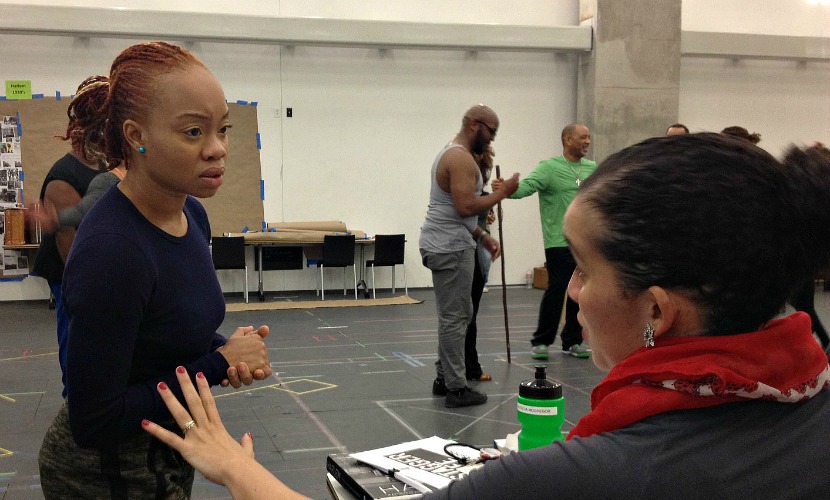New York Catching Up With North Texas
ArtandSeek.net February 8, 2016 18
Choreographer Camille Brown (left) with ‘Stagger Lee’ director Patricia McGregor. Photo: Jerome Weeks
The Denton-born group Snarky Puppy won a Grammy two years ago for best R&B performance, and the collective is up for another Feb. 15 for best contemporary instrumental album for ‘Sylva’ (personal favorite on the release: the New Orleans stomp, ‘Atchafalya’). So the “barnstorming, groove-centric instrumental act with a rabid fan base and a blithely unplaceable style” got a major profile in the ‘New York Times’ yesterday (“A House Built on Solid Funk”) — including some input from an unexpected fan and collaborator, David Crosby.
The group’s style, a convergence of high precision and whimsy, makes it a quintessential live band — even most of its studio albums were made with an audience in the room. The sessions are filmed, for release on DVD and YouTube, which is how the band’s audience ratcheted up to global scale. A D.I.Y. juggernaut, it has a new label — GroundUp, with international distribution through Universal Music Classics — that will release “Family Dinner Volume Two,” the group’s 10th album, on Friday, Feb. 12.
And in that same issue of the Sunday arts section was a profile of choreographer Camille A. Brown — whom Dallasites know from her stellar work on the musical, ‘Stagger Lee,’ at the Dallas Theater Center last year. These days, she’s working to recover the black ballroom dance moves for an Encores! revival of the rarely-seen 1940 musical, ‘Cabin in the Sky.’ The original Broadway production (unlike the film version) was co-choreographed by the great Katherine Dunham and George Balanchine. Unfortunately — or fortunately — very little record of those live dances remains, so Brown is free to do what she does best, what she did for ‘Stagger Lee’: re-interpret social dance steps from the period.
“The thing to remember about social dance is that it was very specific to a time period but also very open to creative identity. There is a specific structure but it’s up to the individual to put what their take is.”
“That’s what I’m doing with my choreography,” she said — reproducing the historical sensibility and steps in numbers like “Boogie-Woogie,” but giving herself the freedom to play and add her own spin. Likewise, she shows the dancers historical footage — Whitey’s Lindy Hoppers are a touchstone — yet the most important thing, she explained, is getting them to move as their bodies want to move. “Without that sense of individual freedom, there’s nowhere to go,” she said.










